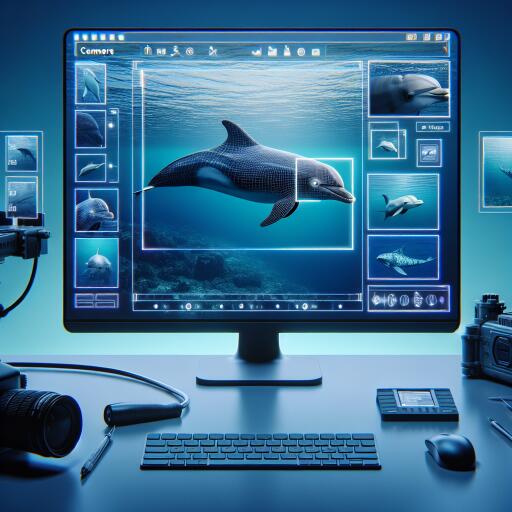
Revolutionizing Marine Biology: The Power of Facial Recognition in Cetacean Research
In a groundbreaking move towards the conservation and study of marine life, researchers have tapped into the potential of facial recognition technology, forging a path to identify individual dolphins and whales across an array of species. This novel approach is heralding a new era in marine biology, offering insights that were once deemed unattainable.
The technology, spearheaded by innovative minds at the University of Hawaii’s Institute of Marine Biology, employs advanced facial recognition software initially designed for humans. It adapts these algorithms to the nuanced features of cetaceans, from the unique pigmentation and scarring patterns to size variations among individuals. Through this lens, the ocean’s inhabitants are no longer anonymous, stretching the boundaries of what marine biologists can learn about these elusive creatures.
At the heart of this technological marvel is its application in conservation efforts. “Being able to recognize individual animals over time unlocks a treasure trove of data,” one project lead highlights. This data includes understanding spatial usage patterns and enhancing estimates regarding population sizes and trends—vital statistics for any conservation strategy. Moreover, this method offers a less invasive means of monitoring marine life, pivotal in preserving the natural behavior and wellbeing of these species.
The impetus for this innovation came from an engineering challenge hosted by an online platform, Happywhale.com, which sought to create a tool capable of individual cetacean identification through photographs. The resulting algorithm has surpassed expectations, successfully distinguishing among 24 species, a testament to the collaborative spirit of the global research community.
Field researchers, such as those from the University of Hawaii’s Marine Mammal Research Program, are among the primary beneficiaries of this technology. They emphasize the efficiency gains in information processing, where days spent manually sorting and identifying photographs are now condensed into mere moments. “Returning from field surveys and being able to quickly ascertain which individuals were spotted can drastically change the pace at which we understand their populations,” noted a marine biologist involved in the program.
Beyond conservation, the social behaviors of species like dolphins are coming into sharper focus. Dolphins are known for their complex social structures, and this technology provides a non-intrusive window into their interactions and behaviors over time. By consistently identifying individuals within social groups, researchers can construct detailed accounts of social dynamics, migrations, and even health status across dolphin communities.
This breakthrough was made possible through a tremendous cooperative effort involving 56 researchers from across the globe, pooling image data spanning six continents and 24 cetacean species. This collective endeavor exemplifies the potential of collaborative science to propel conservation and understanding of the natural world.
As we forge ahead, the implications of facial recognition technology in marine biology are vast and varied. From enhancing our grasp of cetacean life to bolstering conservation initiatives, the potential is as deep and uncharted as the oceans these creatures inhabit. It’s a vivid reminder of how technology, when thoughtfully applied, can open up new horizons in our quest to understand and protect the planet’s biodiversity.
The marriage of technology and ecology in this manner marks a significant milestone in marine research, demonstrating that innovation can indeed swim alongside tradition, leading to a future where technology and natural conservancy go hand in hand.





Leave a Reply